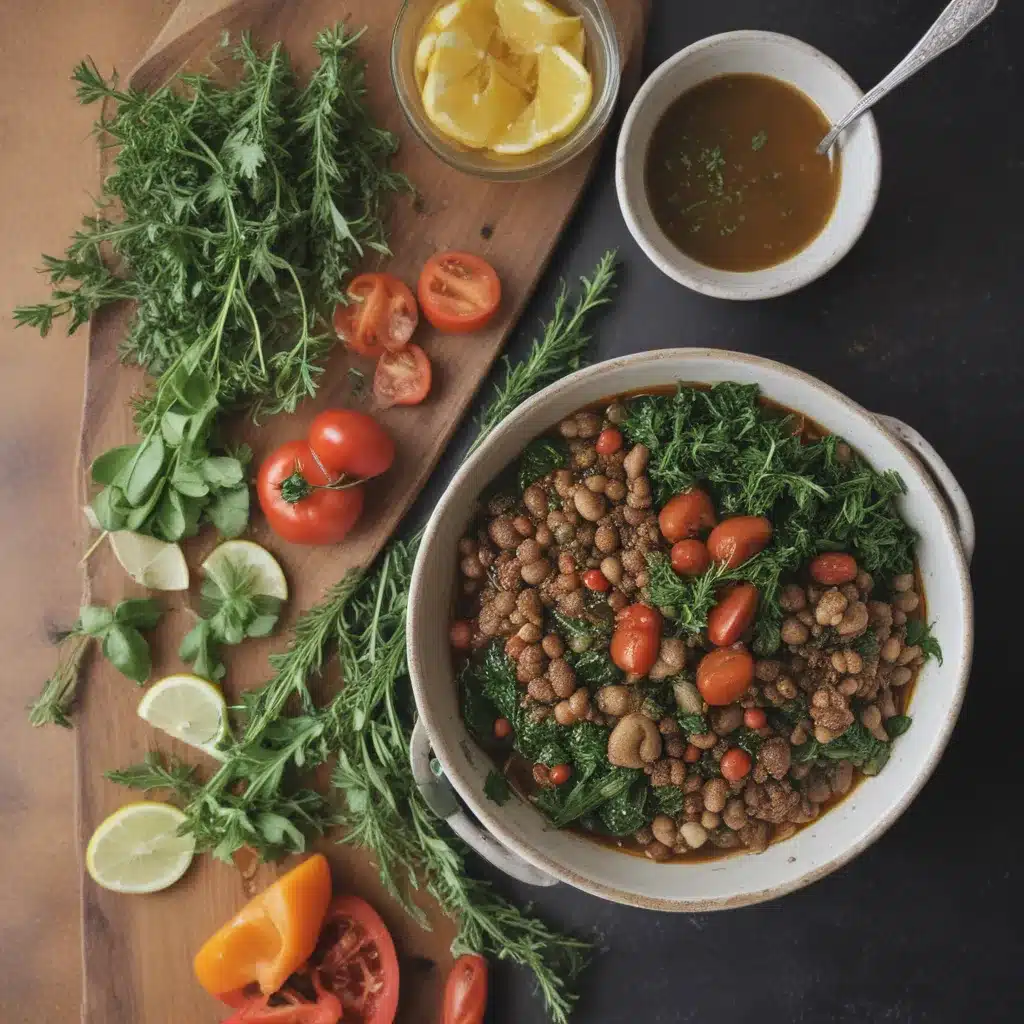
Recapturing the Flavors of Morocco in New York City
As I stroll down the lively streets of New York City, the scent of spices and sizzling meats wafts through the air, transporting me back to the bustling souks of Marrakech. It’s been years since I’ve had the chance to visit my family in Morocco, but the craving for those bold, aromatic flavors never fades.
That is, until I discovered El Bahia, a hidden gem of a Moroccan restaurant tucked away in the heart of the city. The first time I stepped through its doors, the familiar scents and sounds immediately enveloped me, like being wrapped in a warm, spice-infused embrace.
One dish, in particular, caught my eye on the menu – zaalouk. I remembered the first time I tried this Moroccan eggplant salad years ago at a little restaurant near my old apartment. The smoky, tangy, and herbaceous flavors had me hooked from the very first bite. I couldn’t wait to see how the talented chefs at El Bahia would interpret this classic dish.
Mastering the Art of Zaalouk
As I sat down and took my first spoonful of zaalouk, I was immediately transported back to that tiny Moroccan eatery. The flavors were bold, yet perfectly balanced – the smokiness of the roasted eggplant, the acidity of the tomatoes, the aromatic punch of the garlic and spices. It was like a symphony of North African cuisine, each element playing its part in creating a harmonious whole.
I couldn’t help but wonder, how do they do it? What’s the secret to crafting such a delectable zaalouk? Luckily, the restaurant’s executive chef, Fatima, was more than happy to share her expertise.
According to Fatima, the key to making an exceptional zaalouk lies in the careful selection and preparation of the seasonal ingredients. “Zaalouk is a dish that truly celebrates the bounty of the land,” she explains. “The eggplants, tomatoes, peppers – they all need to be at their peak ripeness and flavor.”
Fatima takes me through her process step-by-step. First, she roasts the eggplant, tomatoes, onions, and bell peppers until they’re perfectly charred and caramelized. “The roasting brings out the natural sweetness of the vegetables and adds that wonderful smoky depth to the dish,” she says.
The Importance of Seasoning
Next, Fatima blends the roasted veggies in a food processor, being careful not to overpulse – she wants the zaalouk to maintain a slightly chunky texture. She then adds a generous amount of fresh lemon juice, which provides a bright, acidic counterpoint to the earthy flavors.
“The seasoning is crucial,” Fatima emphasizes. “A dash of cumin, a pinch of paprika, a sprinkle of salt – each spice has to be perfectly balanced to create that signature Moroccan taste profile.” She also incorporates a mix of fresh herbs, like cilantro and parsley, to lend an aromatic freshness to the dish.
As Fatima explains, the traditional method of making zaalouk involves sautéing the vegetables on the stovetop and mashing them by hand. “But we’ve found that roasting the veggies and then pulsing them in the food processor gives us a similar texture and flavor profile, with a lot less effort,” she admits with a wink.
Embracing Seasonal Variations
One of the things I love most about the zaalouk at El Bahia is that the recipe changes with the seasons. “We try to use the freshest, most flavorful produce available at any given time,” Fatima explains. “In the summer, we might lean more heavily on juicy, ripe tomatoes and eggplants. And in the fall, we might incorporate roasted butternut squash or sweet potatoes.”
Fatima’s approach reminds me of the zaalouk I enjoyed at La Maison Arabe in Marrakech – each bite was a unique flavor experience, depending on the seasonal ingredients used. “We want our guests to feel like they’re getting a true taste of Morocco, but with a New York City twist,” she says with a smile.
As I savor another spoonful of the zaalouk, I can’t help but marvel at the way the flavors dance on my tongue. The smoky eggplant, the tangy tomatoes, the fragrant spices – it’s a flavor symphony that transports me back to the bustling streets of Marrakech.
Sharing the Love of Zaalouk
I’ve become a regular at El Bahia, making a point to stop by whenever I’m in the city. And I always make sure to order the zaalouk, no matter the season. It’s become a cherished connection to my Moroccan roots, a way to keep the flavors of home alive even when I’m thousands of miles away.
But I don’t keep this culinary treasure to myself. Whenever I have the chance, I share my love of zaalouk with friends and family. I’ve even started experimenting with my own variations at home, roasting up seasonal veggies and blending them into a smoky, tangy dip that never fails to impress.
So if you find yourself craving a taste of Morocco in the heart of New York City, be sure to visit El Bahia and indulge in their exceptional zaalouk. It’s a dish that celebrates the bounty of the land and the rich cultural traditions of a country I hold dear to my heart. And who knows? Maybe it’ll become a new beloved favorite of yours, too.


